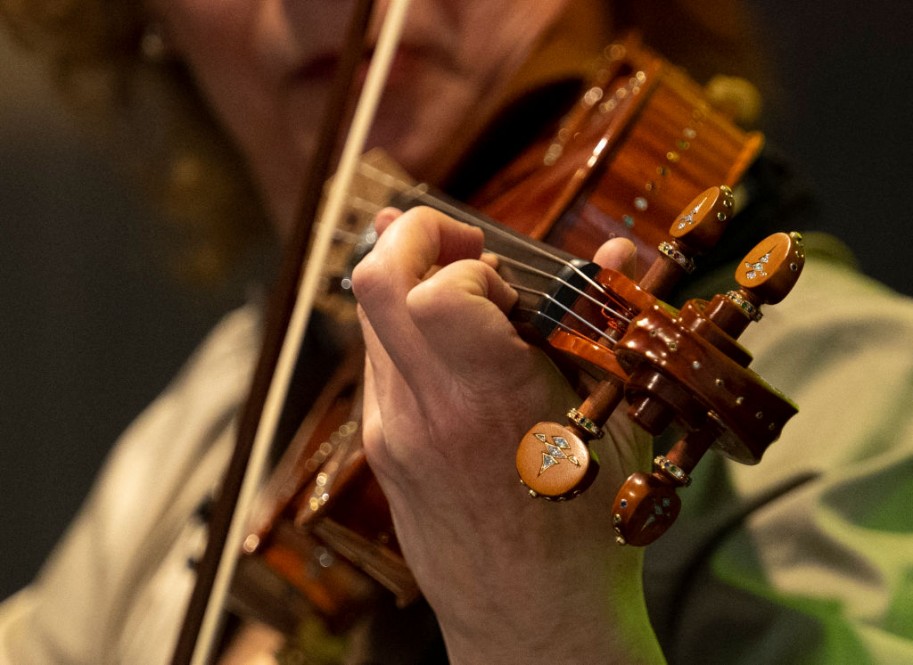
Researchers from China have recognized the potential impact of classical music on individuals' moods and decided to investigate its efficacy in treating depression.
In a recent study published in Cell Reports, it was revealed that around half of patients diagnosed with major depressive disorder struggle with treatment-resistant depression.
It indicates treatment resistance when patient shows inadequate response to two different antidepressant medications with varying mechanisms of action, along with intolerance or poor response to non-convulsive therapy.
The researchers were optimistic about the potential of music to induce an antidepressant effect in situations where conventional methods fell short.
Heading the research was Bomin Sun, a professor overseeing the Center for Functional Neurosurgery at Shanghai Jiao Tong University.
He said, "Our research integrates the fields of neuroscience, psychiatry, and neurosurgery, providing a foundation for any research targeting the interaction between music and emotion."
In the recent study, a group of researchers examined a group of 23 individuals aged 18 to 65 who were grappling with treatment-resistant depression by leveraging the electrodes that were previously inserted into their brains.
Designed to provide deep-brain stimulation for individuals undergoing treatment for major depressive disorder, the electrodes form a pathway that links two specific regions within the forebrain - the bed nucleus of the stria terminalis and the nucleus accumbens.
Sun explained, "The BNST-NAc circuit, sometimes referred to as part of the 'extended amygdala,' underscores the close relationship between this circuit and the amygdala, a central structure in emotional information processing."
"This study reveals that music induces triple-time locking of neural oscillations in the cortical-BNST-NAc circuit through auditory synchronization."
Using implants, researchers discovered that music triggers antidepressant responses by aligning the neural oscillations of the auditory cortex and the rewards circuit. This synchronization enhances sensory and emotional information processing, positively affecting mood.
It was further established through an experiment with 13 participants that the emotional context of a musical composition may not have a notable impact on symptoms of depression. Consequently, the researchers examined the role of familiarity among the remaining ten individuals.
The team introduced a playlist of eight classical music pieces to 10 patients who had not listened to classical music in the past year. The patients were asked to listen to the playlist thrice daily for 14 days.
Following this, they were requested to provide feedback on their most and least favorite pieces from the playlist.
To explore the impact of personal preferences on emotional responses to familiar music, researchers split the participants into two distinct categories.
One group, referred to as the high enjoyment group, listened to their favorite pieces, while the other group, known as the low enjoyment group, listened to their least preferred songs.
Researchers quickly observed noteworthy outcomes upon analyzing brainwave data and employing neural imaging methods. Their findings revealed that individuals classified in the high enjoyment category exhibited enhanced neural synchronization and more effective antidepressant outcomes compared to those in the low enjoyment category.
Following this, researchers investigated deeper into exploring how music can act as an antidepressant, focusing on creating a tailored music therapy program for individuals with reduced enjoyment.
Their approach involved incorporating theta frequency noise into music to boost the coupling of BNST-NAc oscillations, increasing music appreciation among the low-enjoyment group.
Looking ahead, the team is exploring various avenues for future research.
One area of interest involves investigating the relationship between music and the underlying brain structures in individuals with depressive disorders.
Additionally, there are plans to incorporate different sensory stimuli, like visual images, into upcoming studies.
Sun said, "By collaborating with clinicians, music therapists, computer scientists and engineers, we plan to develop a series of digital health products based on music therapy, such as smartphone applications and wearable devices."
"These products will integrate personalized music recommendations, real-time emotional monitoring and feedback, and virtual-reality multi-sensory experiences to provide convenient and effective self-help tools for managing emotions and improving symptoms in daily life."



